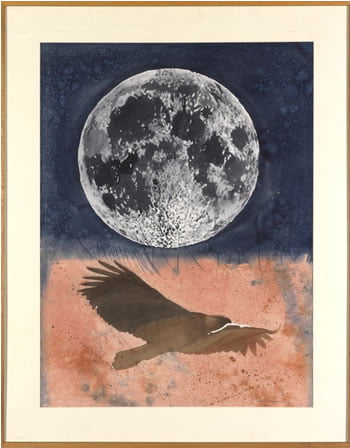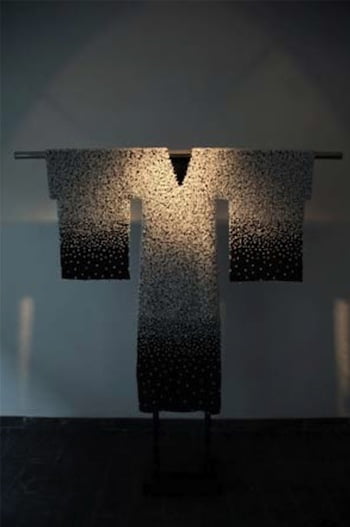Three Special Exhibitions Trace the Path of Impressionism from France to the U.S.
The Crocker Art Museum will present a series of exhibitions this summer showcasing the journey of Impressionism from France to the U.S. With a strong emphasis on landscape paintings, the exhibitions collectively feature works by renowned French and American artists alongside masterpieces of California Impressionism.

Claude Monet, The Islets at Port-Villez, 1897. Oil on canvas 32 x 39 5/8 in. Brooklyn Museum, gift of Grace Underwood Barton
The Crocker’s Summer of Impressionism comprises:
“Transcending Vision: American Impressionism, 1870-1940,” exploring the dissemination of French Impressionism in American painting from the Bank of America Collection;
“Landscapes from the Age of Impressionism,” an exhibition of 40 mid-19th through early 20th-century French and American landscapes from the collection of the Brooklyn Museum;
“Gardens and Grandeur: Porcelains and Paintings by Franz A. Bischoff,” featuring 40 exquisite works by the Bavarian-born artist who moved to California in 1906.
“People often think of French artists when they hear the word ‘Impressionism,’ but aren’t as familiar with the extraordinary Impressionist works created by artists in the United States, and especially here in California,” said Lial A. Jones, Mort and Marcy Friedman Director of the Crocker Art Museum. “We are extremely pleased to share a wide-ranging experience of Impressionism with our visitors next summer – one that brings together works by the French masters and the greatest Impressionist painters of this country and state. We’re particularly excited to present The Summer of Impressionism as an example of the enhanced programming we are able to offer at the New Crocker.”
“Transcending Vision: American Impressionism, 1870-1940,” on view from May 14 through September 25, 2011, explores both the dissemination of Impressionism from its French roots into the American idiom, and its reinterpretation in American landscape painting. Featuring 125 paintings, drawings, and prints drawn from the Bank of America Collection, the exhibition traces the development of Impressionism in the United States and the growth of a distinctively American style of painting.
Among the 75 prominent American artists represented in “Transcending Vision” are Childe Hassam, Lilla Cabot Perry, George Bellows, George Inness, Thomas Moran, and Arthur Wesley Dow. The exhibition is mainly comprised of oil paintings and encompasses the Hudson River School, American Impressionism, and a few works on the cusp of Modernism.
“Transcending Vision” is provided by Bank of America’s Art in our Communities™ program. Through the program, Bank of America has transformed its collection into a unique community resource from which museums and nonprofit galleries may borrow complete exhibitions. By providing these exhibitions and the support required to host them, this program helps enrich communities culturally and economically and generate vital revenue for museums. By the end of 2011, Bank of America will have loaned more than 40 exhibitions to museums worldwide.
“Bank of America is dedicated to strengthening artistic institutions and, in turn, the surrounding communities we serve,” said Kathie Sowa, Sacramento Market President, Bank of America. “Sharing our art collection with the public through partners such as the Crocker Art Museum brings world-class cultural experiences to the residents and visitors of Sacramento and beyond and provides important support to the Crocker that contributes to the local economy.”
“Landscapes from the Age of Impressionism” includes many of the finest examples of mid-19th through early 20th-century French and American landscapes from the collection of the Brooklyn Museum. The exhibition of 40 paintings, on view at the Crocker from June 11 through September 18, 2011, offers a broad survey of landscape painting as practiced by leading French artists such as Claude Monet, Gustave Courbet, Camille Pissarro, and Alfred Sisley, as well as their most significant American followers, including Childe Hassam and John Singer Sargent.
Among the earliest works in the exhibition are Charles-François Daubigny’s “The River Seine at Mante,” and Gustave Courbet’s “Isolated Rock,” which reveal the impact of plein-air sketching practice on landscape art of the period. Heirs to this plein-air tradition, French Impressionists Claude Monet, Alfred Sisley, Camille Pissarro, and Gustave Caillebotte, painted highly elaborated “impressions”—the seemingly spontaneous, rapidly executed landscapes and cityscapes that prompted the name of their movement. Monet is represented here by several works including “Rising Tide at Pourville,” “Vernon in the Sun,” and “The Islets at Port-Villez.”
Following in the footsteps of the French artists, many American painters sought to improve their skills and find inspiration in Paris and its environs, attending French art academies and frequenting the painting locations made famous by their Barbizon and Impressionist predecessors. Some of the Americans had direct contact with leading French landscape painters, sharing landscape sites or seeking informal guidance from admired mentors.
The majority of the American paintings on display depict American locales: beaches, factories, tenements, and notable subjects such as Central Park in works distinguished by brilliant colors and lively, broken brushwork, including Williams Glackens’s “Bathing at Bellport, Long Island,” Julian Alden Weir’s “Willimantic Thread Factory,” Robert Spencer’s “The White Tenement,” and Willard Leroy Metcalf’s “Early Spring Afternoon, Central Park.”
“Gardens and Grandeur: Porcelains and Paintings by Franz A. Bischoff” will be on view at the Crocker from June 25 through October 23, 2011. This exhibition will feature approximately 40 examples of Bischoff’s work, including porcelains, still lifes, and Impressionist landscapes.
After beginning his career as a china painter in Bavaria, Bischoff immigrated to the United States in 1885 to become one of the foremost porcelain painters of his day. He won numerous awards and earned the title “King of the Rose Painters.” When he moved to California in 1906, he began to paint still lifes and landscapes, including the coastal areas of Monterey and Laguna Beach, the Sierra Nevada Mountains, and desert regions.
“Gardens and Grandeur” was organized by the Pasadena Museum of California Art and curated by Jean Stern, the executive director of the Irvine Museum. The Crocker’s chief curator and associate director, Scott A. Shields, Ph.D., contributed an essay for the exhibition catalogue.
The Crocker Art Museum, established in 1885, is one of the leading art institutions in California. The Museum offers a diverse spectrum of special exhibitions, events and programs to augment its collections of Californian, European, Asian, African and Oceanic artworks. The Crocker is located at 216 O Street in Downtown Sacramento. Museum hours are 10 a.m.–7 p.m., Tuesday–Wednesday; 10 a.m.–9 p.m., Thursdays; 10 a.m.–5 p.m., Friday–Sunday. Every Third Sunday of the month is “Pay What You Wish Sunday” sponsored by Bank of America. For more information, call (916) 808-7000 or visit crockerartmuseum.org


